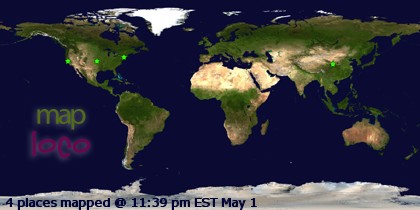 |
| Table Mountain aglow from our balcony |
 |
| Harbourmaster's House. 1904 |
 |
| V&A Market's Alfred Mall |
 |
| V&A Market |
 |
| Yes, they have a ferris wheel |
 |
| Made for John Lennon's death, and has been shown around the world |
 |
| The Pinotage. There's also a Merlot. |
 |
| The breakwall |
 |
| Cheezy frames are scattered around the city. |
 |
| The footbridge to the Clock Tower and Mandela Museum |
 |
| Working fishing boats. |
 |
| A movie set! |
The 45 minute ferry ride was fun, passing container ships and LNG tankers.
 |
| The Glomar Penguin, last out of Tokyo in January |
 |
| A slight rise in the ocean |
 |
| The iconic Table Mountain |
 |
| Terns nesting |
 |
| The terns |
 |
| Note the pile of rocks on the right |
We saw where Robert Sobukwe was kept in solitary confinement – but with all the comforts of home, except being kept away from anyone else for 6 years, unable to speak to anyone. The guard dogs of the prison were kept next to his house.
 |
| Puppy homes |
He led us through the prison, explaining what prison life was like for the 4,000-odd political prisoners held on the island.
 |
| Entering the prison |
 |
| His cell block |
 |
| Home to 60 |
 |
| His bunk was the corner bottom one |
 |
| Glass was added in the late 1970's |
 |
| Before the bunks? A mat and 2 blankets |
 |
| The menu, one for blacks and one for coloureds |
 |
| Mandela's outdoor courtyard. He grew tomatoes |
 |
| Mandela's window onto the courtyard |
Mandela lived in this one cell -- with no bed, no toilet (that was the brown pot), no sink (that was the metal bowl) a thin pad and two blankets as a bed -- for 18 years. It’s 2 m by 3 m, which is smaller than my bathroom, and today, it's exactly the way it was when he was imprisoned there.
 |
| Home for 18 years |
Mandela and the other leaders could only interact with other inmates on Saturday, sports day. The logic at the time was that by isolating the leaders, they couldn't influence others. In fact, by isolating the leaders, the leaders unified, and were able to better lead.
The downside to visiting Robben Island is that you can only do so on a bus tour. They used to let people on the island to wander around and discover the place for themselves (and there are interpretive signs all over), but people were taking souvenirs, damaging the buildings, and making a mess of the endangered animals that live on the island (like the terns, oystercatchers and penguins). So now, you take the ferry to the island, get on a bus, get escorted around on a guided tour, get escorted through the prison, then get on the ferry and go home. There’s not even time for lunch if you take the 11 AM ferry. Sigh.
 |
| The prison entrance |
 |
| Iconic still |
 |
| The drawbridge swings... |
 |
| ...for a passing yacht |
 |
| Tugs and fishing vessels come and go |
 |
| A baby cannon |
 |
| Ever-present Table Mountain |
 |
| Add caption |
The Waterfront area has a couple of awesome modern buildings from an architectural perspective. The first is the Water Shed, a modernized old dock building transformed into a spectacular indoor market, with small stall spaces for retailers.
 |
| The entrance |
 |
| Former dock cranes juxtapose with new architecture |
 |
| A new and as yet unfinished 2nd floor |
 |
| View to the stalls below |
 |
| The open air mall |
 |
| The view down the 2nd floor |
 |
| The exterior |
 |
| The inside, or at least, a small part of it. It smelled great |
 |
| The top floor of one of the 6 wings |
 |
| A crew working outside in the drydock |
 |
| They forgot to mention reconcilliation |
=================
Today’s Africa Travel Tip: Security, Part 1
If you’re coming to Cape Town, which the article I read yesterday said was the 8th most dangerous city on the planet (this article ranks it #4, worse than Kabul and Mogadishu), you might be worried about security. Well, the Cape Town Central District has green clad “Public Security” staff at the rate of probably 2 guys per block in the downtown core. The V&A Waterfront has security every 200 m.
Generally, there are security guards everywhere. They guard the ATMs on the street, most every consequential building’s entrance, every mall, every market, and are everywhere. All nightclubs have them. Interestingly, few are armed. They all have radios and most have nightsticks.
Now, many don’t give you massive confidence that they’ll do much, but they’re there. They won’t stop the incessant street beggars (who, for the record, work one block each. You get pestered for a block, then cross the road, and a new guy starts). In fact, I’ve never seen a security guard do anything (which is probably good, actually). But if you need info, they’re good guys to ask.
More on what they do and don’t do in the next Africa Travel Tip.


No comments:
Post a Comment